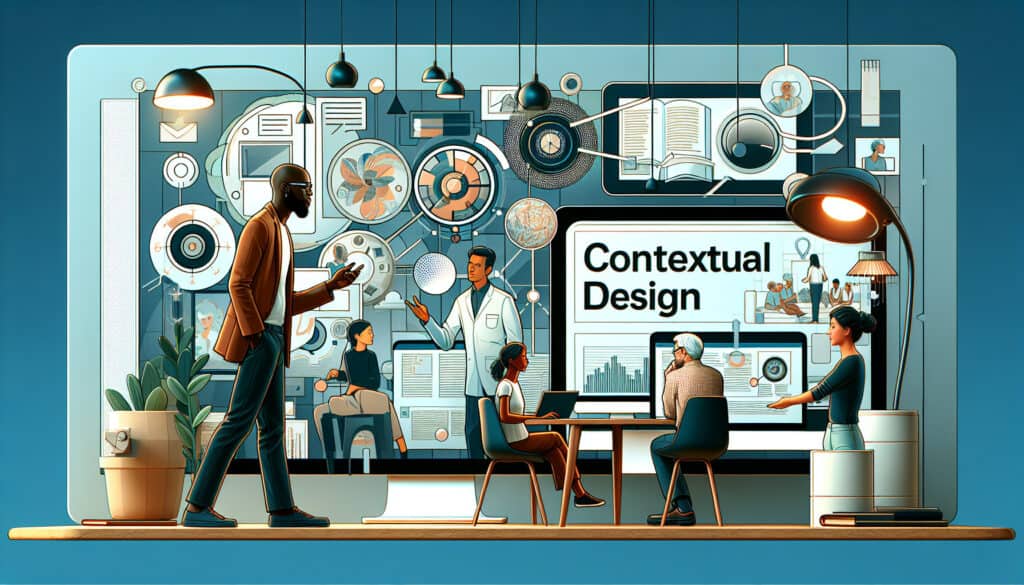A user-centered design process that uses in-depth field research (contextual inquiry) to understand users’ needs and work practices in their own environment.
- Methodologies: Engineering, Quality
Contextual Design

Contextual Design
- Design for Sustainability, Design Process, Design Thinking, Design Validation, Human-Centered Design, Usability, Usability Testing, User experience (UX), User-Centered Design
Objective:
How it’s used:
- Designers go to the users' workplace or home to observe them, and then use that data to create detailed models of the work, which then drive the design of the product.
Pros
- Provides a deep, contextual understanding of user needs, leads to highly user-centric and innovative designs, and helps to uncover unarticulated needs.
Cons
- Is extremely time-consuming and resource-intensive, requires highly skilled researchers, and the data analysis process can be complex.
Categories:
- Customers & Marketing, Ergonomics, Product Design
Best for:
- Designing products based on a deep, contextual understanding of the user gained from field research.
Contextual Design methodology finds extensive application in industries such as consumer electronics, healthcare, and automotive, where the need for user-centered products is paramount. This approach is often employed during the early stages of the design process, particularly during concept development and testing phases. Initiatives are typically led by design teams, user researchers, and engineers who collaborate closely with stakeholders and organizations to ensure the needs of end-users are incorporated from the outset. Field observations can reveal everyday challenges users encounter, allowing designers to create detailed contextual models that capture workflows, emotional factors, and environmental influences, leading to innovative solutions that may not surface through traditional market research. Design firms, startups, and established corporations increasingly engage users through co-design workshops, where participants share their experiences directly, enhancing empathy and understanding as they actively contribute to the design process. This dynamic exchange often results in products that are not only functional but also resonate deeply with users on a personal level, addressing latent needs that may have previously gone unrecognized. As a result, teams can achieve a stronger alignment with user habits and preferences, ultimately resulting in higher satisfaction, engagement, and market acceptance for the developed solutions.
Key steps of this methodology
- Conduct field studies to gather observational data from users in their natural environment.
- Identify key activities, workflows, and pain points through immersion and interaction.
- Create affinity diagrams to organize observed behaviors and contextual findings.
- Develop visual models such as flow charts, sequence models, and cultural models to depict user interactions.
- Generate design frameworks that encompass user needs and contexts based on model insights.
- Iterate on design concepts using feedback loops from users to refine and enhance prototypes.
- Validate design solutions by co-designing and testing with users in relevant contexts.
Pro Tips
- Leverage iterative prototyping based on observational insights to refine designs continuously alongside user feedback loops.
- Utilize affinity diagramming during data synthesis to identify patterns and underlying motivations that may not be immediately apparent.
- Engage in immersive role-playing exercises to experience the user's environment and tasks, revealing hidden challenges and opportunities for innovation.
To read and compare several methodologies, we recommend the
> Extensive Methodologies Repository <
together with the 400+ other methodologies.
Your comments on this methodology or additional info are welcome on the comment section below ↓ , so as any engineering-related ideas or links.
Historical Context
1986
(if date is unknown or not relevant, e.g. "fluid mechanics", a rounded estimation of its notable emergence is provided)

Related Posts
METS to Calories Calculator
Meta-Analysis
Message Mapping
Mental Model Diagrams
Maximum Acceptable Pushing and Pulling Forces
Material Requirements Planning (MRP)